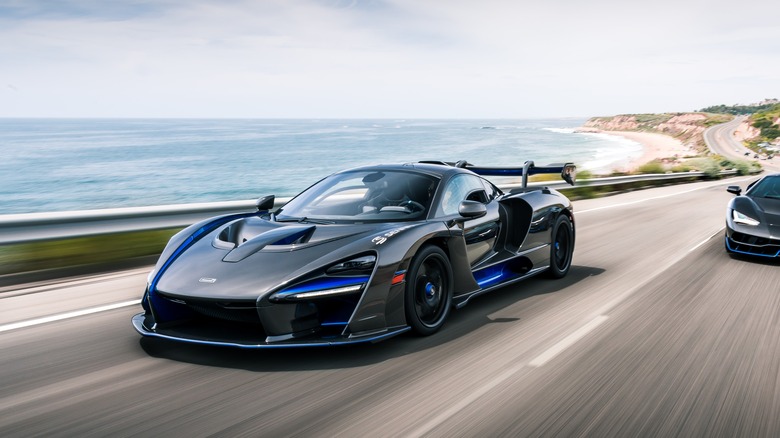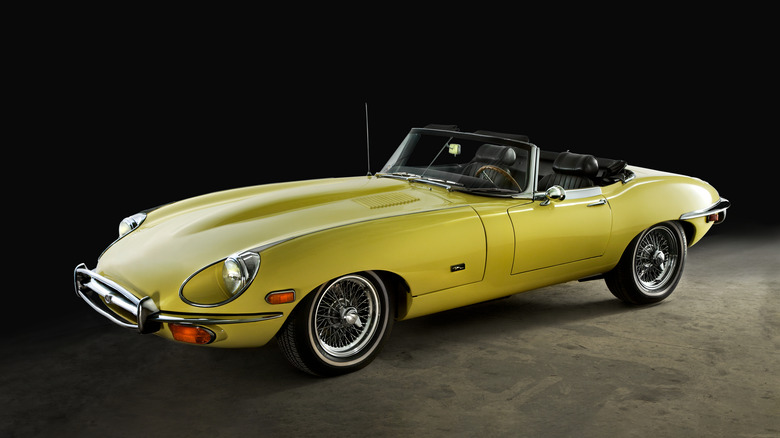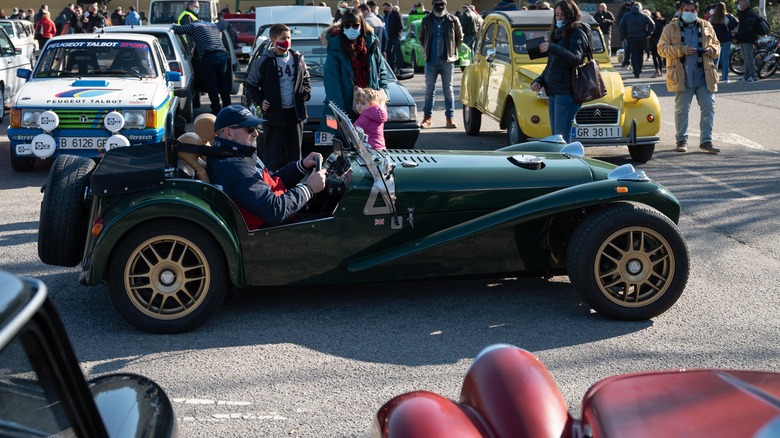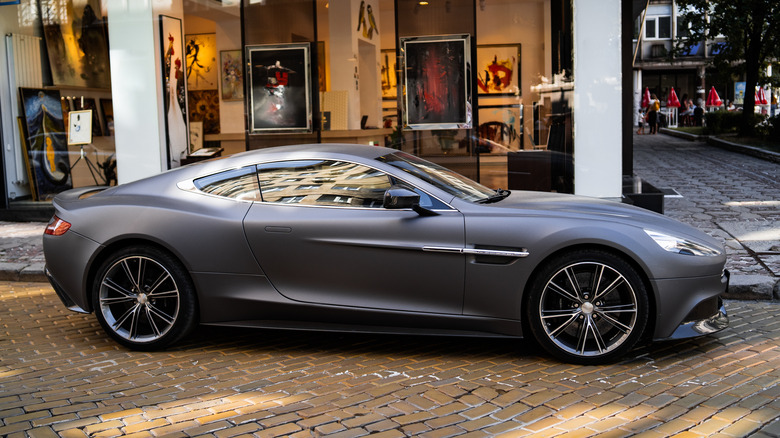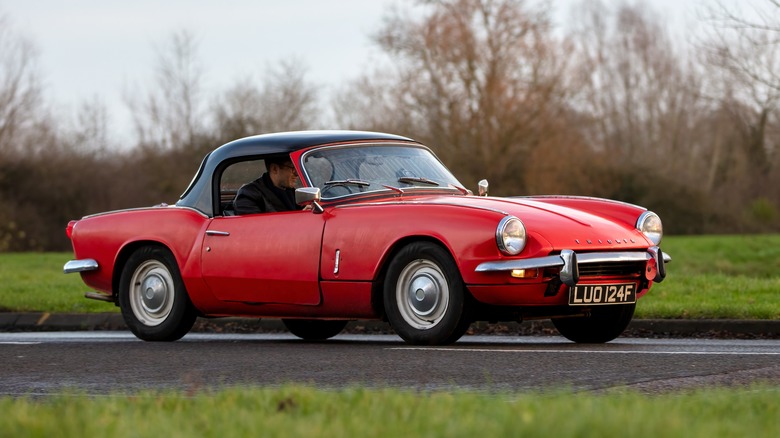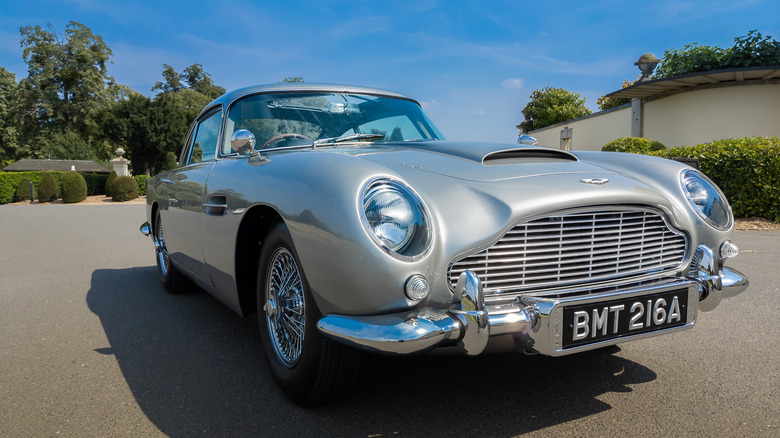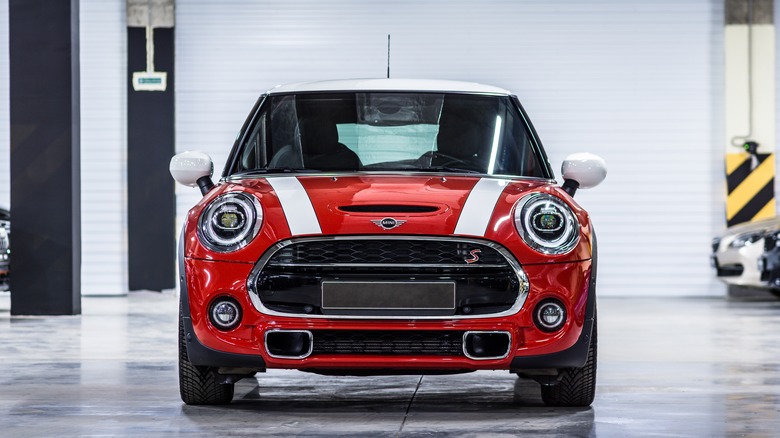The 7 Greatest British Sports Cars Of All Time
British sports cars have a storied and truly remarkable history. British Sports Car Hall of Fame notes that while manufacturers were producing the precursors to modern sporting vehicles before World War II, the economic burden of rebuilding after the war's end and the vast exposure of American servicemen to English automotive excellence led to a surge in exports in the aftermath. Americans loved the sleek designs and the cool demeanor of English roadsters (and their drivers), and English production lines were happy to capitalize on this desire for the products of their engineering.
All this led to a booming automotive industry that has only grown more iconic in the years since. One Stop Racing notes that seven of the ten currently competing Formula 1 racing teams headquarter their operations in the United Kingdom, even though teams hail from all over the world, and with the sport truly touching upon the entire globe.
British sports cars are often set apart by their minimalistic design and classically sleek body design. Without any further ado, here are seven of the most beloved British sports cars ever built.
The McLaren F1
The McLaren F1 is a great place to start when considering British sports cars. This vehicle was in production for just a few short years in the 1990s, and it made a lasting impression on car enthusiasts everywhere. McLaren has always been a leading name in the world of sports car and supercar design and production. The F1 is perhaps one of the most iconic examples of sports car design because of its sleek edges and unique ability to look like a classic racing vehicle while remaining truly roadworthy for the typical driver. McLaren notes that this vehicle sports an iconic one-plus-two seating configuration and a massive 618 horsepower engine, making it a somewhat quirky yet spacious vehicle to sit in on a drive while the riders experience potent acceleration and state-of-the-art handling.
ThisisMoney reports that one of these cars recently sold at auction for nearly $20 million, even as the original price tag set the vehicle at $815,000. The limited number of McLaren F1 vehicles produced, with only 108 completed vehicles leaving the production line, makes this iconic vehicle a marvel of modern engineering and an incredibly rare piece of British automotive history. The car, in its original form, is no longer in production, but it remains one of the most unique and legendary vehicles in the long line of British sports car production.
Jaguar E-Type
The Jaguar E-Type is another iconic example of classic British car-making excellence. The E-Type was introduced in 1961 at the Geneva Motor Show, according to Stratsone. The E-Type paved the way for classic, rounded Jaguar features; Sports Car Digest calls this vehicle the classic antihero car, noting it took the British automotive world by storm when it was introduced. What made this car different was that it was made in huge volumes and was accessible by a large swath of the public rather than remaining an out-of-reach luxury item that only song could attain.
Jaguar had already had success in the racing world, with its C-Type, winning races in the decade before. With this new E-Type coming into vogue, the public began to get behind the Jaguar name as a consumer model and not just a racing accessory. E-Type UK notes that this Jaguar was driven by all manner of celebrities at the tops of their game including George Harrison and Frank Sinatra. What's more, Jaguar notes that a relaunch of this classic model is in the works. This means that drivers in the modern world may be able to soon take advantage of a slice of unique British sports car history without the enormous price tag that a vintage model will surely demand.
Lotus 7
The Lotus 7 is another installation of iconic British craftsmanship and is a favorite among Lotus lovers. First released in 1957 (via Autocar), this Lotus led the way for a new design in this space. Today, drivers might be more familiar with the Lotus Exige, which is of course another iconic British sports car in its own right. But the Lotus' fame really began with this model. Colin Chapman, the designer, is famously quoted as saying the inspiration for this design came from simply adding lightness (via Supercars). The Lotus 7 took advantage of readily available parts from British manufacturing sources and traded the hallmarks of comfort for immensely boosted performance and an iconic, sleek automobile body. It has since been used as the source of inspiration for many vehicles since the 7 was originally rolled out.
Lotus, like many other sports car brands on this list, began life as a racing outlet. Early Lotus models were designed for hill climbs and other offroad driving exhibitions, according to Silodrome. It's from this basic bone structure that the Lotus 7 emerged. Born from designers firmly planted in the world of high-performance automotive excellence, the 7 sparked an amazing level of creativity and performance for drivers of all types. The 7 is an iconic model. It looks phenomenal and has inspired generations of other car designs that have come since.
Aston Martin V12 Vantage
Like many other British sports cars found on this list, the Aston Martin range finds its origin in the world of racing. Dick Lovett notes that the founders of what would later become Aston Martin — Lionel Martin and Robert Bamford — started out as car salesmen and racers themselves. Decades later, Aston Martin would produce the DB5 (as a blip in the 1960s), and then the iconic V12 vantage. Both of these cars would serve as the base vessel for Bond movie magic. Both the DB5 and V12 Vantage were driven by Sean Connery, Daniel Craig, and Pierce Brosnan, respectively as three iconic and generational Bond heroes in titles such as: "GoldenEye," "Tomorrow Never Dies," Thunderball" "Casino Royale," "Skyfall," and "Die Another Day" (via Aston Martin F1). Of course, the Bond Aston Martin vehicles would incorporate all kinds of unique modifications and upgrades that aren't available to the common driver. Yet the Aston Martin in its commercial configuration still packs extreme levels of style and power under the hood and inside the carriage.
Aston Martin reports that the V12 Vantage Coupe brings 700 horsepower to bear and can reach a top speed of 200 mph. Aston Martin notes that the modern build of this icon is both "the fastest and fiercest Vantage ever made."
Triumph Spitfire
The Triumph Spitfire was unveiled at the 1962 Earls Court Motor Show in London, according to Just British. The vehicle immediately turned heads with a four-speed manual transmission and a 1,493cc inline 4 engine (via Auto Express).
The Spitfire was designed to be a sports automobile for the everyday driver. Sports Car Digest notes that Triumph's parent company, the Standard Motor Company, had already developed high-end vehicles to compete in a category more akin to luxury travel, but the Spitfire was something entirely unique. Instead of adding to an already crowded marketplace of luxury automotive options, the Spitfire catered to those who wanted to enjoy the open road as more of a weekend warrior.
The Triumph Spitfire delivers on this goal in spades. The vehicle was engineered to outclass the existing Austin Healy Sprite (via Sports Car Digest) while providing significant value for the price. The Spitfire borrows its name from the iconic, powerful fighter jets that helped turn the tide over European skies during a bygone era of wartime anxiety, but the newest Spitfires to leave British factories were designed to place that same attitude of fierce maneuverability and grace into the hands of drivers across Britain as a leisure item instead.
Aston Martin DB5
Of course, the Aston Martin DB5 would also make this list. It's no shock that Aston Martin would be the builder of two iconic British sports cars. As noted, the Aston Martin DB5 was the original ride for the classic James Bond adventures. However, this isn't the only thing that makes the DB5 an iconic driving machine.
Aston Martin notes that this vehicle was featured heavily in "Goldfinger," and often enjoys the moniker, "the most famous car in the world." Aston Martin F1 reports that the DB5 has featured in eight Bond films, ranging from 1964's "Goldfinger" to the most recent "No Time to Die," released in 2021. There's even a miniature replica "DB5 Junior" for children who can't get enough of the car!
The DB5 saw an enlarged engine capacity (bringing it up to 4 liters) over the previous DB4 Vantage model, the DB5 also sports a synchromesh ZF five-speed gearbox. Aston Martin reports that the car could achieve a 0 to 60 acceleration in 7.1 seconds, and reached a top speed of 142 mph. Obviously, compared to a modern muscle car these numbers might seem pedestrian. However, in a '60s classic this proved to be a set of stunning achievements housed in a beautiful frame that would quickly go on to be known as a modern classic in the world of automotive innovation and design. This Aston Martin came in a hard top convertible or standard model and drivers could even purchase a DB5 that included a three-speed automatic transmission rather than the classic stick shift.
Mini Cooper S
The Mini Cooper S can't be left off a list of classic British sports cars. The Mini Cooper is, by many accounts, the epitome of what it means to be a British racing vehicle. The Mini Cooper was featured prominently in the 2003 reboot of "The Italian Job," featuring a star-studded cast of characters (via IMDB). And the Mini Cooper S was initially billed as a rally car addition (via Car Covers). Mini USA notes the unique wheelbase that placed each of the four tires at the outermost edges of the vehicle's perimeter: The car's small stature and squat frame made for a fantastic grip in all conditions, a perfect racing vehicle for the wild terrains of rally car racing.
The Mini Cooper brand has been iconic since it was rolled out in the late 1950s, and with BMW taking the reins on indoctrinating American drivers to the prestige and thrill of this uniquely silhouetted vehicle in 2002 (via Car Covers), the brand has continued to grow in stature and popularity. It would truly be a crime to leave the Mini Cooper S off of any list of iconic British motor vehicles.

